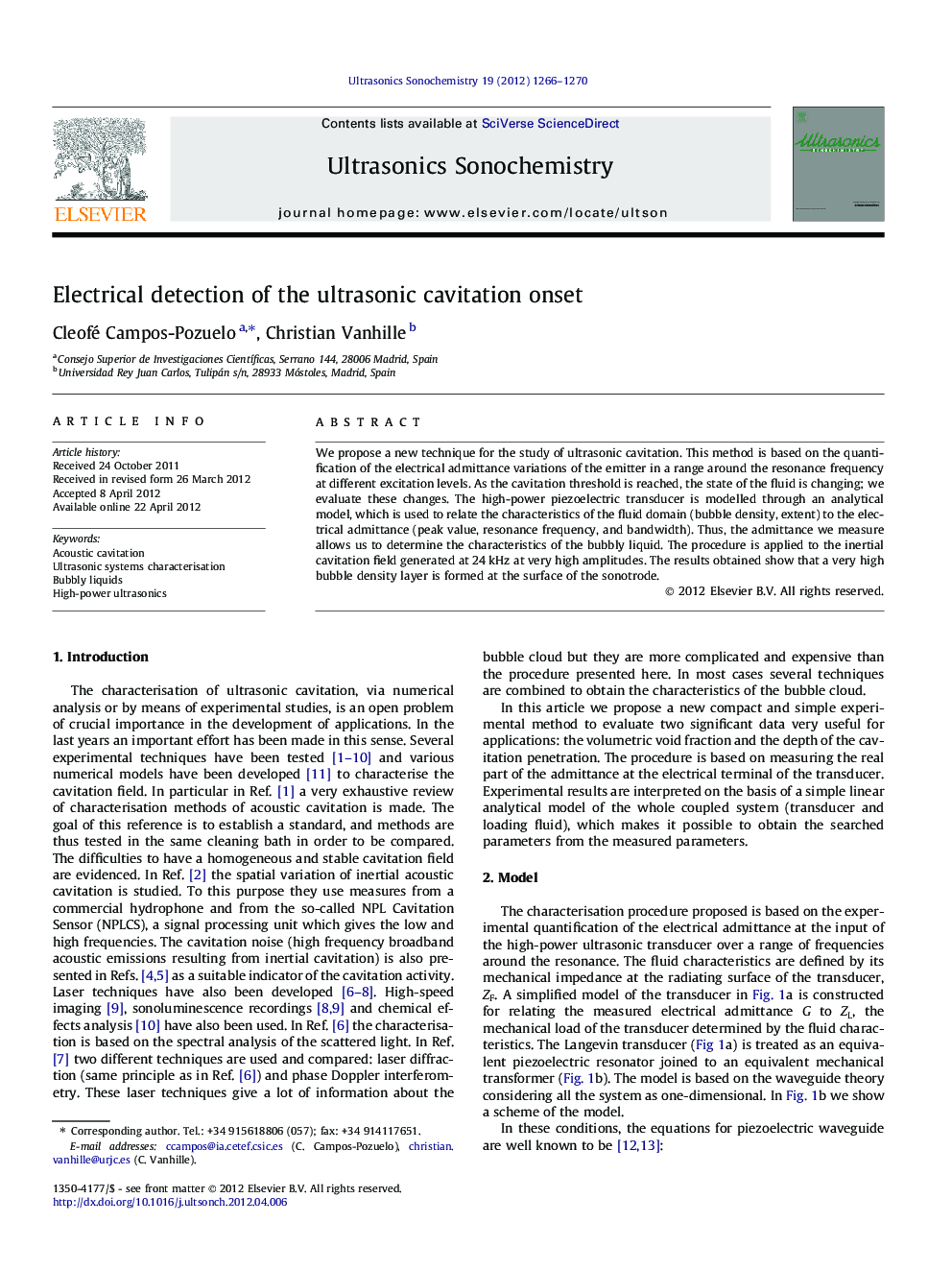| Article ID | Journal | Published Year | Pages | File Type |
|---|---|---|---|---|
| 1266884 | Ultrasonics Sonochemistry | 2012 | 5 Pages |
We propose a new technique for the study of ultrasonic cavitation. This method is based on the quantification of the electrical admittance variations of the emitter in a range around the resonance frequency at different excitation levels. As the cavitation threshold is reached, the state of the fluid is changing; we evaluate these changes. The high-power piezoelectric transducer is modelled through an analytical model, which is used to relate the characteristics of the fluid domain (bubble density, extent) to the electrical admittance (peak value, resonance frequency, and bandwidth). Thus, the admittance we measure allows us to determine the characteristics of the bubbly liquid. The procedure is applied to the inertial cavitation field generated at 24 kHz at very high amplitudes. The results obtained show that a very high bubble density layer is formed at the surface of the sonotrode.
► We propose a new technique for the characterisation of inertial ultrasonic cavitation. ► The method is based on the quantification of the electrical admittance variations of the emitter at the cavitation onset. ► The procedure is applied to the inertial cavitation field generated at 24 kHz at very high amplitudes.
